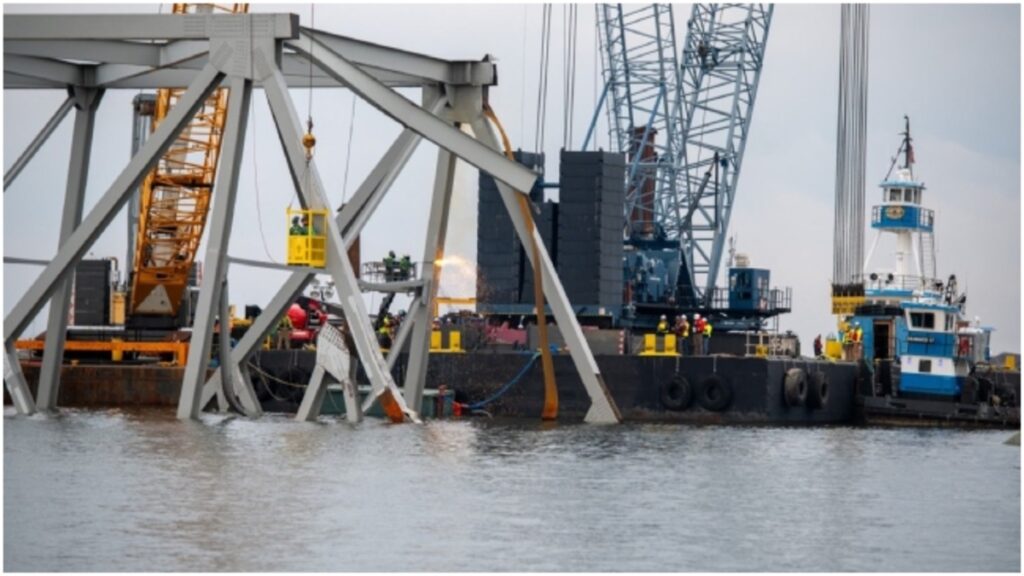
The bustling port city of Baltimore was thrown into chaos early Tuesday morning when a cargo ship collided with the Francis Scott Key Bridge, resulting in the structure’s catastrophic collapse.
The impact was so severe that it halted vessel traffic into and out of the Port of Baltimore, posing significant challenges for maritime operations and commuter traffic.
Six construction workers were working on the bridge at the time of the collision and are believed to have fallen into the frigid waters of the Patapsco River below. Tragically, the bodies of two victims have been recovered, while four others remain missing and are presumed dead, according to officials.
The aftermath of the bridge collapse has prompted a flurry of emergency responses and logistical challenges. One immediate concern is the impact of heavy rain expected in the region, which could exacerbate delays for commuters and complicate ongoing recovery efforts. Mayor Brandon M.
Scott issued a warning urging residents to brace for potential disruptions and exercise patience during their commutes.
In response to the crisis, the Captain of the Port of Baltimore is taking proactive measures to establish a temporary alternate channel for commercially essential vessels.
This temporary route, located on the northeast side of the main channel near the Key Bridge, aims to facilitate the flow of marine traffic while recovery operations continue. However, the safety zone around the collapsed bridge remains in effect to protect personnel, vessels, and the aquatic environment.
The ramifications of the bridge collapse extend beyond the immediate vicinity, affecting maritime activities and passenger travel. Carnival cruise ships rerouted from Baltimore have been forced to dock in neighboring ports, disrupting travel plans for thousands of passengers.
POLL—Should the Government Increase Taxes on the Wealthy To Reduce Economic Inequality?
The closure of the Port of Baltimore has significant implications for regional and national supply chains, highlighting the port’s critical role in the movement of goods and commodities.
Efforts to clear the debris and reopen the channel are underway, but due to the scale of the wreckage, they face significant challenges. Salvage teams are working tirelessly to remove the twisted remnants of the bridge and the cargo ship that collided with it.
However, the complexity of the operation requires meticulous planning to ensure the safety of personnel and prevent further damage to the surrounding infrastructure.
Transportation Secretary Pete Buttigieg emphasized the recovery operation’s complexity, noting the need for precision and expertise in clearing the debris without causing additional harm.
ALSO READ: Biden Approves $60 Million Aid After Baltimore Bridge Collapse
Federal funding has been allocated to support the cleanup and recovery efforts, highlighting the importance of restoring normalcy to the region’s transportation networks.
As the cleanup efforts continue and the investigation into the cause of the bridge collapse unfolds, the community remains united in its resolve to overcome this unprecedented challenge.
The rebuilding of the Francis Scott Key Bridge represents not only a physical restoration but also a symbol of resilience and solidarity in the face of adversity.
You Might Also Like:
Top US Historian Condemns NBC Over Ronna McDaniel Role
Asylum Seekers’ Train Defies Warnings Against Illegal Crossings
Cardi B Shows Off Toothless Grin in New TikTok Video
Lindsay Lohan Reveals Why She Left Hollywood, How She Found Love in Dubai
9 Celebrities Who Have Excelled in the Business World
